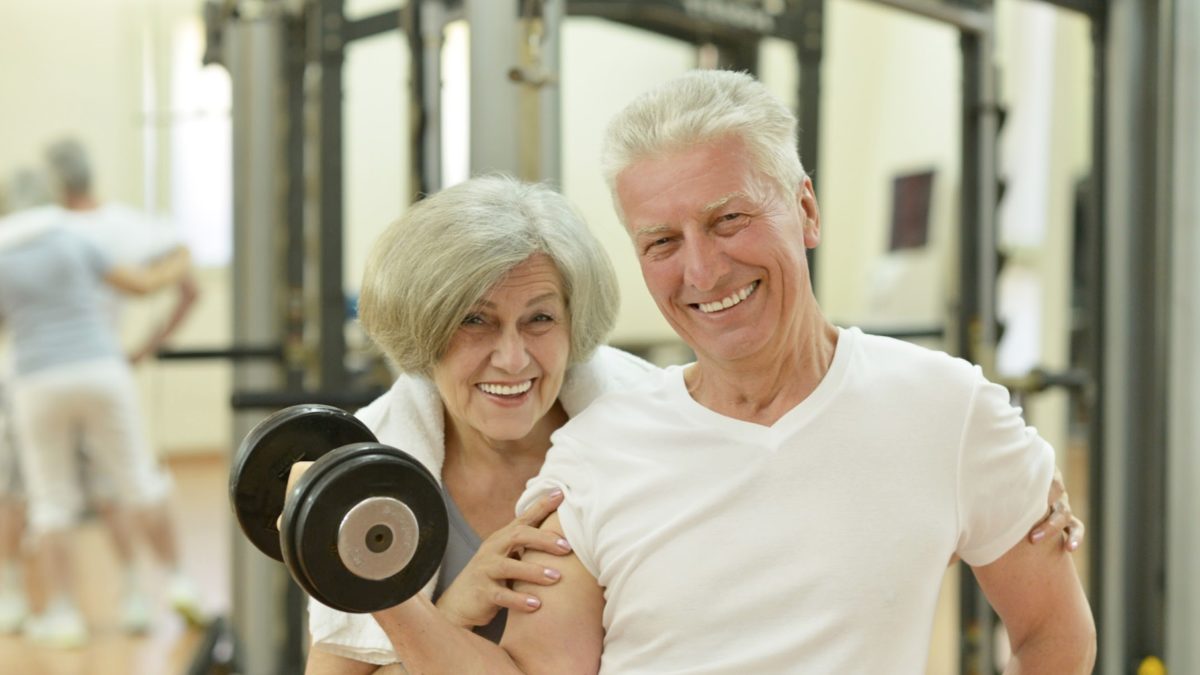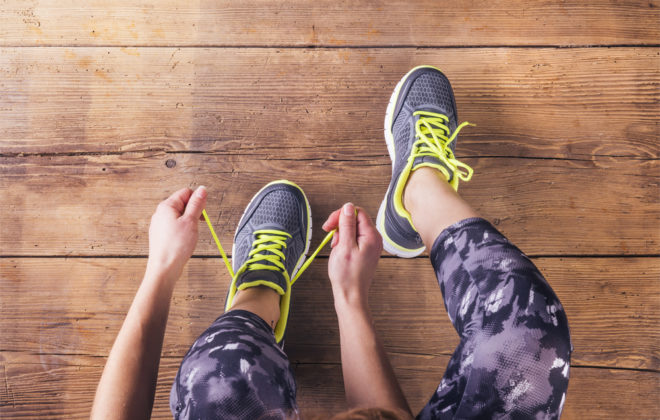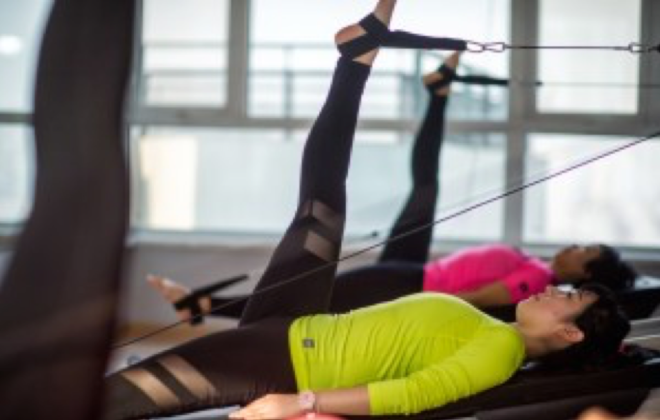Osteoporosis and how to prevent it
Osteoporosis is a disease of the elderly, most of them women, characterized by low bone mass, bone loss and increased bone fragility causing frequent fractures. Today, osteoporosis is considered to be one of the biggest public health problems, given the growing population of developed countries in the world. Bone fractures (hip, spine, forearm) are the most dangerous consequence of osteoporosis and one of the main causes of permanent disability and mortality in third-age persons. In this blog, find out what causes osteoporosis and how to successfully prevent it by exercising.
The aging process engulfs all tissues in the human body, including bones that become more fragile and break more easily. Osteoporosis also affects women and men, and today more and more young people, who have it as a result of other diseases, taking certain medicines or influenced by genetic factors. Since there are no signs of recognizing the disease, until the bone fracture when the disease is already advanced, osteoporosis is often referred to as a “silent epidemic”. With the extension of life expectancy, the number of people with osteoporosis in the EU will increase from 27.5 million in 2010 to 33.9 million in 2025, an increase of as much as 23%.
In order to reduce the incidence of osteoporosis and consequently bone fracture, it is necessary to devise the most effective methods of preventing the disease. The standard methods most commonly include calcium and vitamin D supplementation, although these methods have not shown a major impact on bone density preservation, while, for example, exercising or engaging in certain sports activities have achieved significantly better results in increasing bone mass. Physical activity promotes bone formation, slows or stops bone loss, improves muscle coordination and reduces the risk of falls and fractures. However, not all forms of physical exercise have the same effect on bone mass improvement, and it is therefore important to highlight those forms that will significantly affect the prevention of osteoporosis.
Development of osteoporosis
Although most people consider bones to be solid structures that do not change over time, bones are actually living tissues that constantly undergo decomposition and construction. There are three types of bone cells: osteocytes, osteoblasts and osteoclasts. Each of these cells has a significant function in the process of bone remodeling. Osteoblasts are bone marrow cells that are responsible for creating the organic part of the intercellular substance – osteoids. After the mineralization process, the osteoid created becomes a hard bone intercellular substance. Osteoclasts are multinucleated cells that arise from the blood and break down bone tissue. During the breakdown phase in the process of bone remodeling, osteoclasts invade the bone surface and destroy the nucleus and minerals, leaving small cavities. At this stage, the process of bone building, which the osteoblasts are responsible for, continues. Osteoblasts fill the resulting cavities with new bone. The whole process takes 3-6 months, which takes some time to evaluate the effectiveness of osteoporosis prevention programs. When the level of bone loss exceeds the level of bone formation, osteopenia and osteoporosis occur.
Growth, development and process of bone remodeling
Over the course of our lives, the function of osteoblasts and osteoclasts changes, and this affects the condition of bone tissue. From birth to about the age of 20, osteoblast activity is increased and more bone tissue is created which causes the bones to grow. At the same time, osteoclasts are also active that break down previously created and mineralized bone, consistent with weight gain. After the growth phase in the bone, the processes of formation (osteoblast activity) and degradation (osteoclast activity) of bone tissue continue, called remodeling.
Bone remodeling is a process that takes place continuously in the body under the influence of hormones and involves the breakdown of existing bone tissue and the creation of new bone tissue in the same place. From the age of 20 to 30, bone turnover and bone mineral density can still increase due to increased osteoblast activity. Between the thirties and forties, the processes of bone decomposition and formation are almost equal, while after the age of forty the osteoclast activity is higher, which means that the processes of degradation become more intense than the process of new bone formation. Entering menopause, bone loss in women doubles, which lasts for about ten years. Thereafter, bone loss continues as before menopause, ie about 1% per year. It is extremely important that the maximum bone mass, which is gained by the age of thirty, be as high as possible, since after the age of thirty we spend what we have “earned” until then. So, bone quality in old age depends largely on how strong our bones are at a young age.
Bone quality in old age depends largely on how strong our bones were at a young age.
The reason for the significant disease of women lies in the fact that bone mass depends on the amount of secretion of sex hormones, namely estrogen. Namely, upon entering menopause, estrogen secretion ceases, which causes the bone structure to change, and they become less resistant to the forces acting on them. Men suffer from osteoporosis less due to the effects of the male sex hormone testosterone and greater muscle mass than women, which makes their bones more dense and therefore firmer. However, bones in men also change as a natural consequence of aging. But most often their bone structure remains firm enough to prevent osteoporosis from developing.
Prevention of osteoporosis by exercise
Given the different types of physical activity with the highest potential for bone mass increase, two types of training stand out – strength training and plyometric training. In order to maintain or increase the optimal level of bone mass, it is necessary to participate throughout life in activities that generate greater substrate reaction forces and in those with an external load significantly greater than that in daily life. It has been found that, compared to the untrained population, athletes have significantly higher bone mineral density values, especially handball players, basketball players and gymnasts. Exercise activates all the muscles of the body, thereby generating muscle force that acts on the surface of the bone. The impulses created are transmitted to the bone tissues where they stimulate the bone cells. Such mechanical stimuli affect the formation of bone cells.
Strength training is a form of exercise that aims to produce the greatest possible force, and therefore has a major impact on the process of osteogenesis, ie it improves bone quality and prevents bone fractures in the elderly population. Strength exercises that are most commonly recommended for people with osteopenia or osteoporosis are isotonic exercises with exercise because they accelerate osteoblastic activity. Also, studies have been conducted to examine the impact of exercise without and with load on increasing bone mineral density. Such studies showed an increase in bone mineral density (BMD), with an increase in bone density in the exercise group. That is why training with external load is considered one of the best ways to increase bone density. However, in order to achieve these effects, it is important to know how to properly dose the load, which means that strength training should include higher external loads (60-85% 1 RM), varied exercises and should be conducted for a minimum of 6 months in a continuous manner.
Plyometric training involves various jumps and throws, characterized by extremely intense eccentric-concentric contractions during which the body is subjected to great reaction forces by the substrate. Plyometric training is used to develop jump type explosive power and to increase speed and power in general. Given the heavy workload that plyometric training entails, it is rarely used in working with older people. However, this does not mean that activities such as running, jumping rope, etc. in the prevention of osteoporosis should be excluded.
In conclusion, a combination of plyometric and load training is considered to be most effective for increasing bone mineral density and thus for the prevention of osteoporosis. We must not forget that osteoporosis begins at an early age, and is manifested only in adulthood. That is why continuing education is needed on how to build and keep bones healthy.




